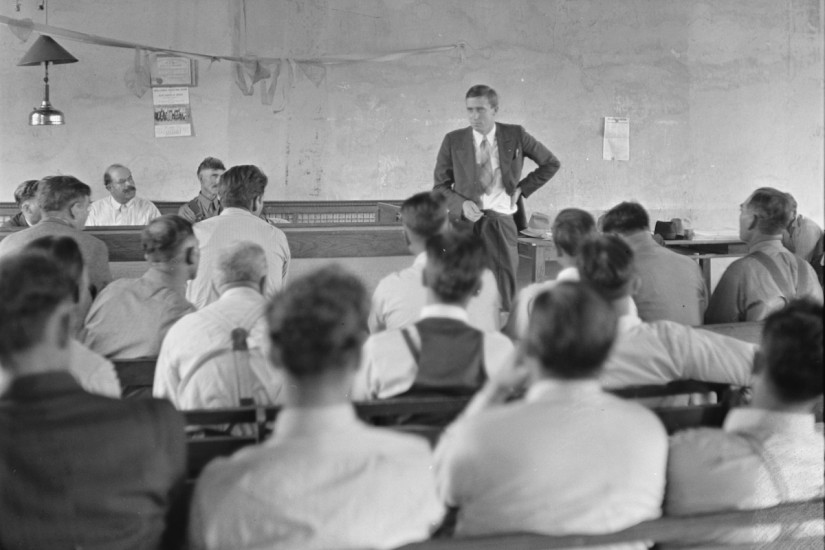There was once a time when the Catholic Church was at the forefront of worker education in the United States, and when labor schools — which brought together workers from different industries to learn the basics of union organizing, parliamentary procedure, collective bargaining techniques, labor law and history, and public speaking — played instrumental roles in training everyday men and women to assert their power in the workplace.
Labor education programs still exist in a few academic settings — at Cornell, at Penn State, and at the Boston Labor Guild, which the Archdiocese of Boston has administered for almost seventy years. But at many universities worker schools have come under attack in recent years from conservative think tanks, nonprofits, and politicians. Meanwhile, the decline of the community-based labor school movement coincides with the drastic reduction of union membership since that period.
But in an era of increasingly non-democratic, arbitrary control of workers’ lives by employers, there is a corresponding need for organized labor educational programs like those that were once common in the heyday of union power — schools that will train working-class students in the fundamentals of labor law and organizing tactics, that will empower rank-and-file union members, and that will give them the opportunity to develop the sort of communities that are essential for revitalizing unions.
The recent wave of teacher strikes may offer the sort of social movement blueprint required for successful labor education: as Ellen David Friedman argues, such movements are “bottom-up, scrappy, unfunded, rooted in a critical social analysis, and committed to radically democratic values.” A rebirth of grassroots labor schools, conscious of the challenges and failures of those preceding them in the postwar period, could have a powerful impact in training disenfranchised workers for successful campaigns to remake the balance of power in the public and private sectors.
The history of Catholic labor schools provides an instructive example of the possibilities and pitfalls of worker education. By the 1920s, the National Catholic Welfare Council (NCWC) — now known as the United States Conference of Catholic Bishops — had been strongly influenced by the Church’s social teaching. Growing out of Pope Leo XIII’s 1891 encyclical Rerum Novarum, this body of doctrine regarded unions as an exercise of workers’ natural right of association. Though Pope Leo and the Church rejected socialism, they also recoiled from aspects of capitalism, preferring a middle course that envisioned cooperative workplace management shared by workers and employers.
